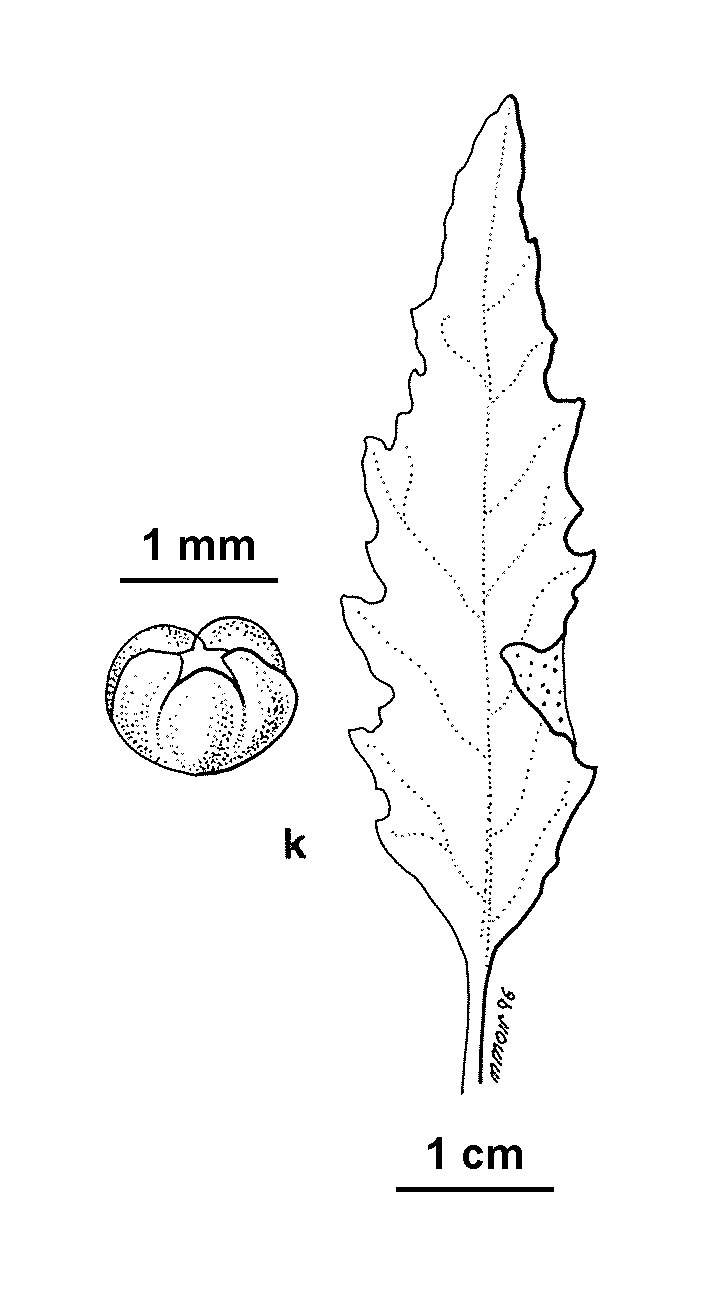Dysphania ambrosioides
(L.) Mosyakin & ClemantsErect annual to short-lived perennial, odorous with a smell resembling turpentine, to c. 1.3 m high. Young branches with fine cottony hairs. Leaves alternate, petiolate, ovate to narrowly elliptic, 3–12 cm long, 1–5 cm wide, margins with irregular, blunt teeth, glabrous, but lower surface with scattered yellowish resin droplets. Flowers female and bisexual, in small clusters along spike-like branches within a leafy or leafless panicle; bisexual flowers with perianth 5-lobed in upper half, stamens 5 with broad membranous filaments; female flowers with tepals united to near apex and enclosing ripe seed; pericarp loosely covering seed, with a few apical, resin-filled hairs. Seed horizontal or oblique, dark reddish-brown, c. 1 mm diam Flowers mostly Jan.–Apr.
VVP, VRiv, MuF, GipP, OtP, Gold, EGL, EGU. Also naturalised WA, SA, Qld, NSW, ACT. Chiefly a riparian weed in Victoria and locally common along the lower Mitchell and Snowy Rivers in the east, occasional near the Murray, Goulburn and Yarra Rivers.
Walsh, N.G. (1996). Chenopodiaceae. In: Walsh, N.G.; Entwisle, T.J., Flora of Victoria Vol. 3, Dicotyledons Winteraceae to Myrtaceae, pp. 129–199. Inkata Press, Melbourne.
 Spinning
Spinning



